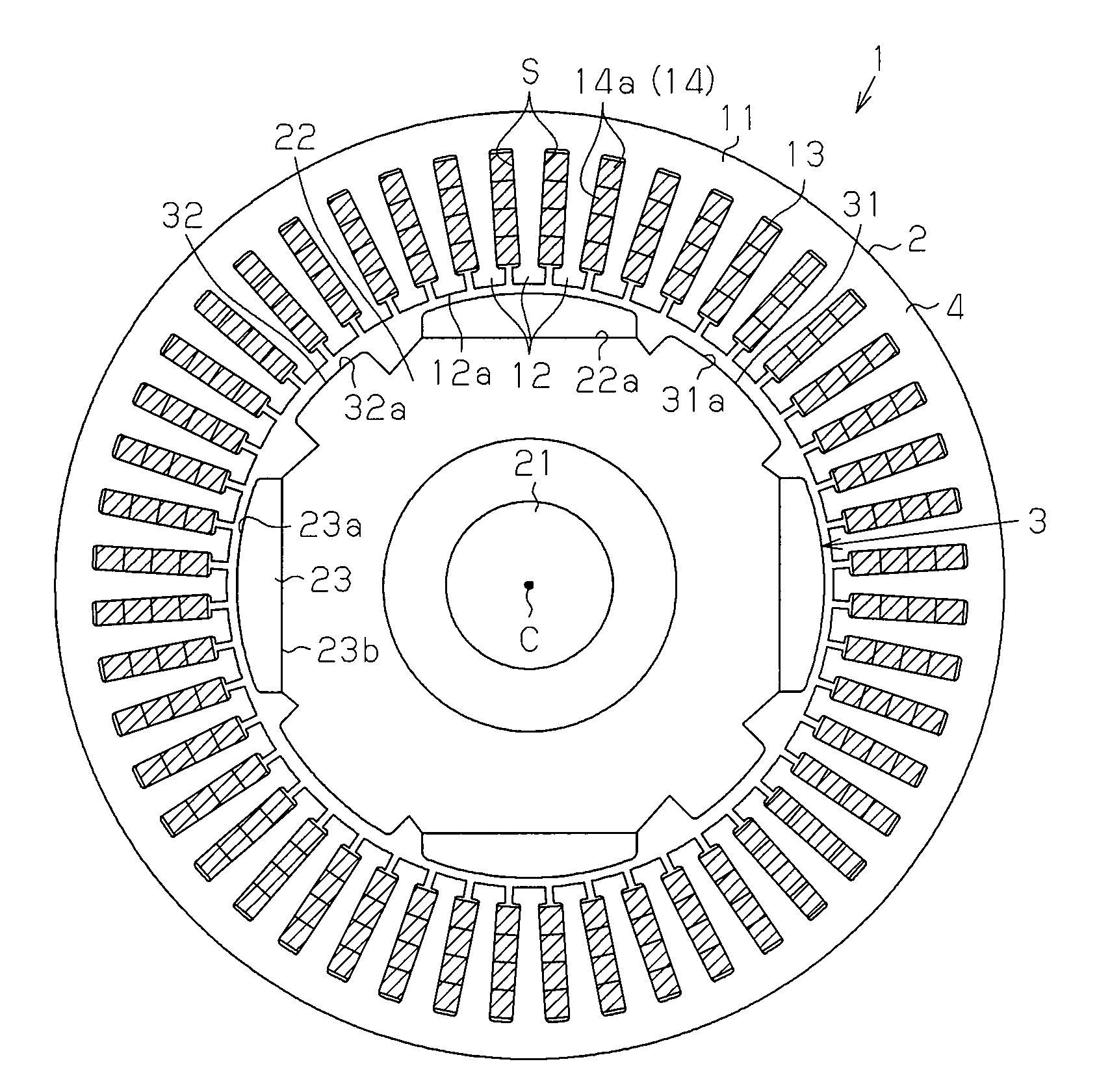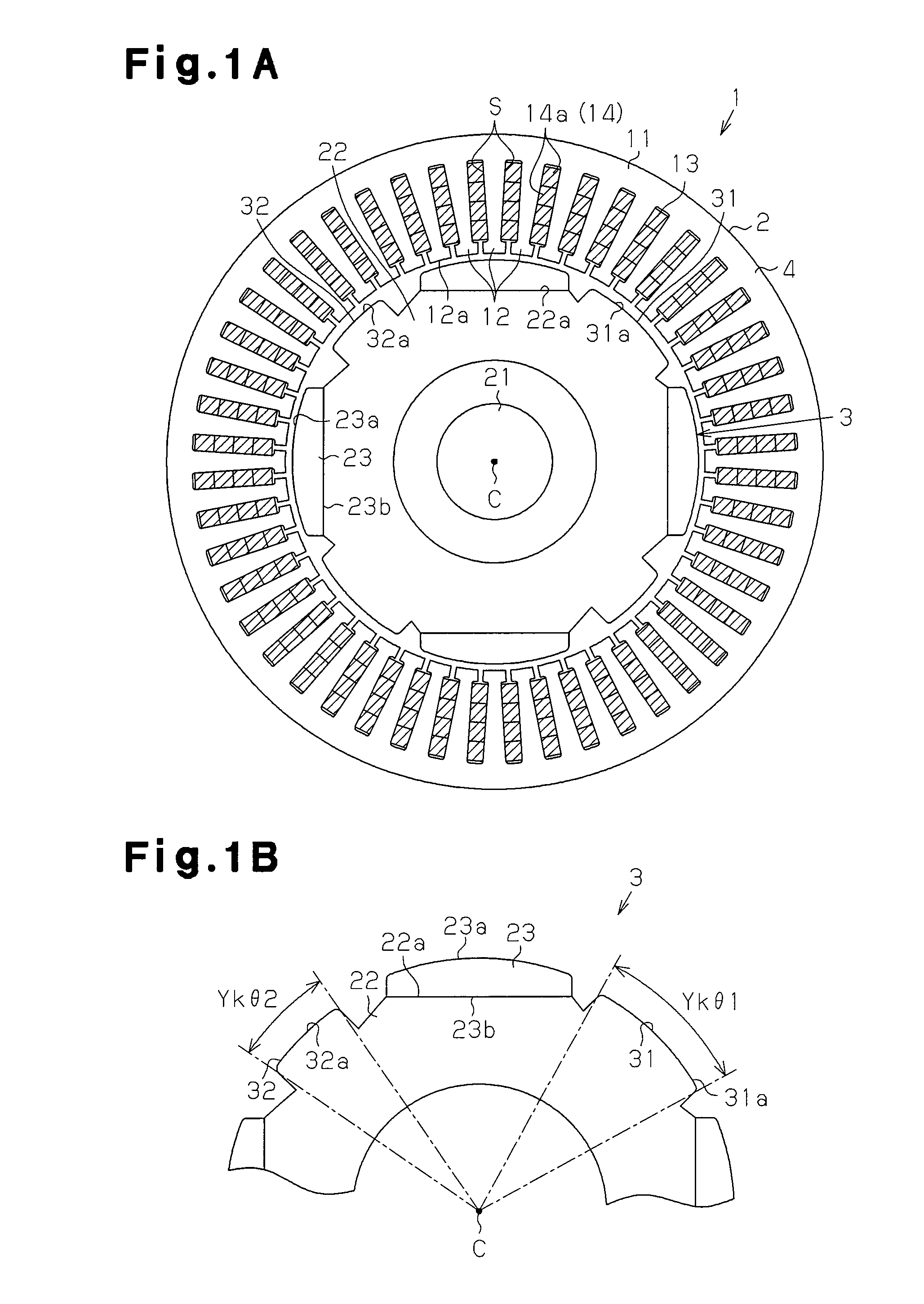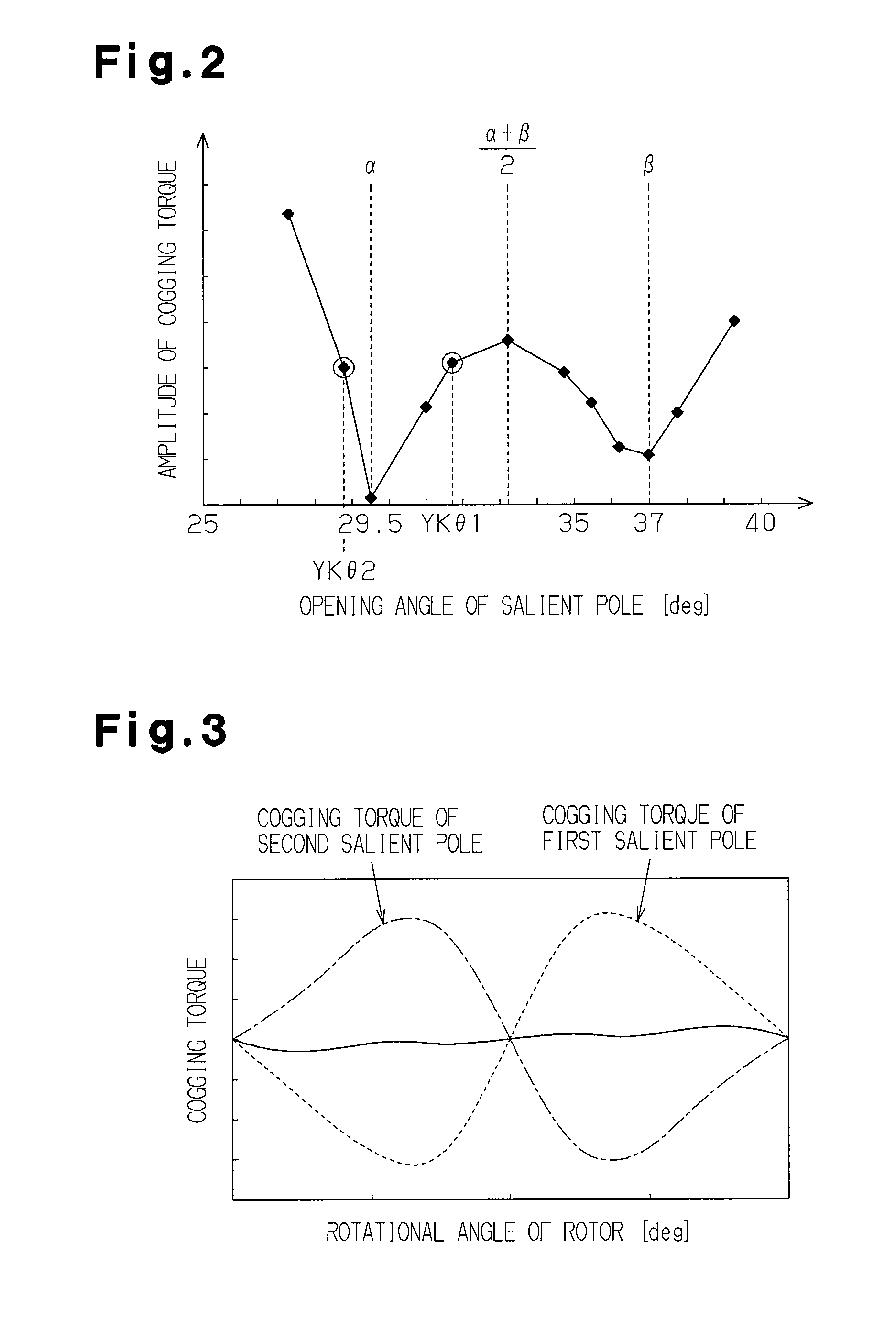Motor
a technology of motors and rotors, applied in the direction of rotating magnets, magnetic circuit rotating parts, synchronous machines with stationary armatures, etc., can solve the problems of easy occurrence of magnetic imbalance, deterioration of rotational performance, increase in vibration, etc., to reduce vibration and improve rotational performance.
- Summary
- Abstract
- Description
- Claims
- Application Information
AI Technical Summary
Benefits of technology
Problems solved by technology
Method used
Image
Examples
first embodiment
[0053]A first embodiment obtained by embodying the present invention will be described below with reference to the accompanying drawings.
[0054]As shown in FIG. 1A, an inner-rotor type motor 1 includes a substantially annular stator 2 and a rotor 3 arranged inside the stator 2 in the radial direction thereof. The stator 2 substantially encloses the rotor 3.
[0055]The stator 2, as shown in FIGS. 1A and 1B, includes a stator core 4. The stator core 4 has a cylindrical portion 11 and a plurality of (in the present embodiment, forty-eight) teeth 12 extending from the cylindrical portion 11 to the inside in the radial direction and arranged at equal intervals in the circumferential direction. Slots S are formed between adjacent teeth 12. Segment coils 13 for generating magnetic fields that rotate the rotor 3 are inserted into the slots S. More specifically, the number of slots S is equal to the number of the teeth 12 (in the present embodiment, forty-eight). Insulators (not shown) are inte...
second embodiment
[0091] the following advantages can be obtained.
[0092](4) In the present embodiment, the opening angle of the outer surface 124a of the salient pole 124 is defined as an opening angle Ykθ(°), the opening angle between both the circumferential ends of the distal end portion 12a of one of the teeth 12 is defined as a opening angle Tθ(°), and the total number of teeth 12 arranged on the cylindrical portion 11 is represented by L. In this case, the opening angle Ykθ is set to satisfy the above expression (4). For this reason, when one end portion 124b in the circumferential direction of the outer surface 124a of the salient poles 124 overlaps one end portion 12x in the circumferential direction of the distal end portion 12a of the arbitrary first tooth 12 (tooth 12b) in the radial direction, the other end portion 124c in the circumferential direction of the outer surface 124a overlaps the other end portion 12y in the circumferential direction of the “a”th tooth 12 (tooth 12c) from the f...
third embodiment
[0103] the following advantages can be obtained.
[0104](1) In the motor 201 having fourteen magnetic poles and twelve slots, the ratio A / B of the circumferential width A of the magnet 223 and the circumferential width B at a distal end (tooth distal end portion 212a) of the tooth 212 is set to satisfy the expression 0.85203 becomes small (for example, smaller than that obtained when A / B=1) (see an experiment result in FIG. 17), and consequently, vibration can be reduced. More specifically, FIG. 17 shows the magnitude of the unbalanced load generated on the rotor 203 when the ratio A / B was changed in the experiment. As is apparent from FIG. 17, when the ratio A / B satisfies the expression 0.85223 is simply set to be equal to the circumferential width B at the distal end (tooth distal end portion 212a) of the teeth 212 (i.e., the ratio A / B is ), the unbalanced load on the rotor 203 becomes small. In the present embodiment, the ratio A / B is set to 0.95 at which the unbalanced load on the...
PUM
 Login to View More
Login to View More Abstract
Description
Claims
Application Information
 Login to View More
Login to View More - R&D
- Intellectual Property
- Life Sciences
- Materials
- Tech Scout
- Unparalleled Data Quality
- Higher Quality Content
- 60% Fewer Hallucinations
Browse by: Latest US Patents, China's latest patents, Technical Efficacy Thesaurus, Application Domain, Technology Topic, Popular Technical Reports.
© 2025 PatSnap. All rights reserved.Legal|Privacy policy|Modern Slavery Act Transparency Statement|Sitemap|About US| Contact US: help@patsnap.com



